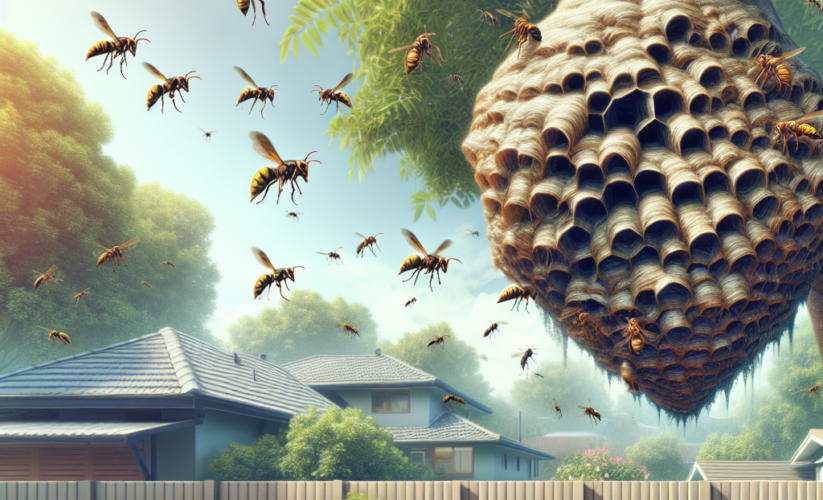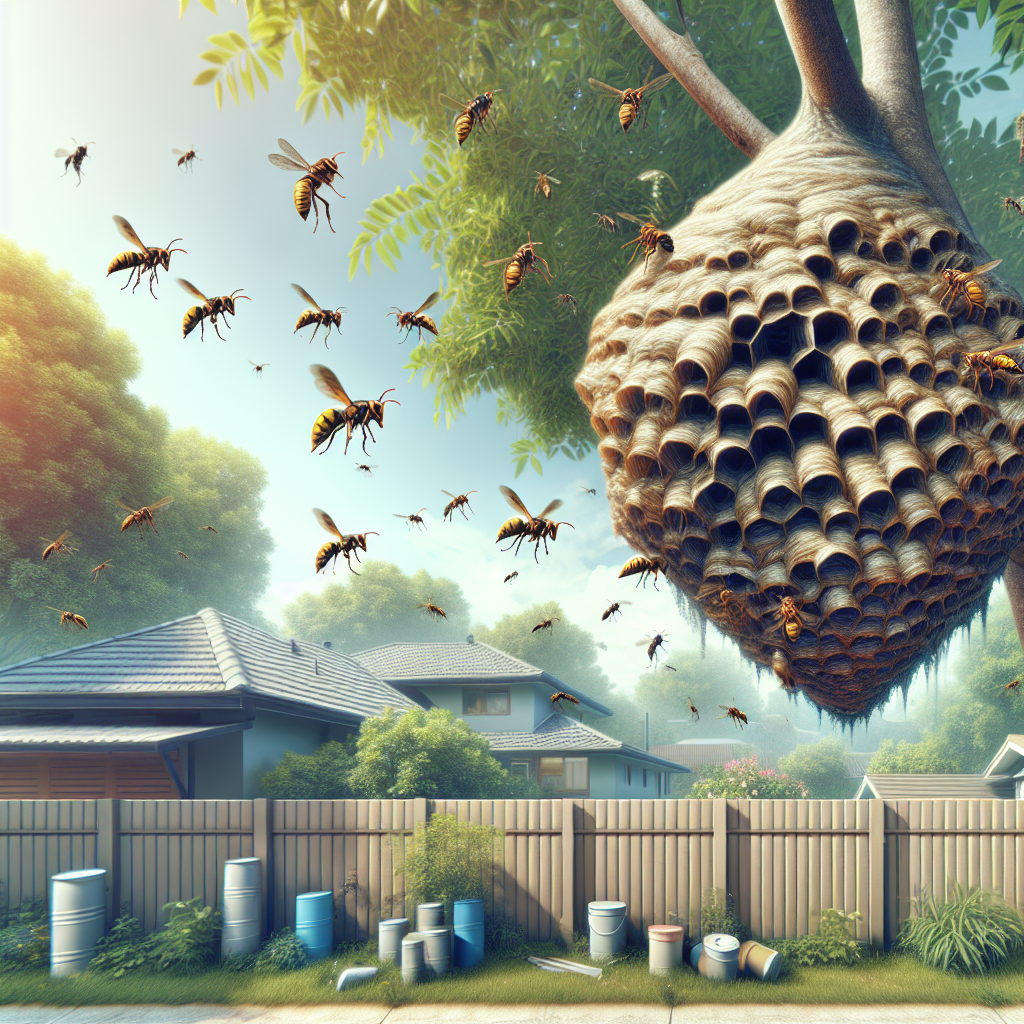
“10 Essential Hornissennest Tips to Eliminate Pests Fast”
Understanding Hornissennest: The Intriguing Nest of Hornets
Hornissennest, or hornet nests, are fascinating structures built by hornets that showcase the incredible architectural capabilities of these insects. This article delves into the life cycle, behavior, and significance of hornets and their nests, along with practical tips on how to manage these nests safely. With a closer look at the biology and ecology surrounding hornets, we aim to provide a comprehensive understanding of hornissennest.
What is a Hornissennest?
A hornissennest is a complex, often large, nest built by hornets, primarily made of a papery material created from chewed wood fibers mixed with saliva. These nests can vary in size and shape, ranging from small, hanging structures to larger, more elaborate colonies that can house thousands of hornets. **Hornets** are social insects that thrive in well-organized colonies, and their nests serve as a vital habitat for their social activities, including nurturing their young.
Characteristics of Hornissennest
One of the most notable characteristics of a hornissennest is its appearance. At first glance, these nests often exhibit a grayish or brownish color due to the wood fibers used in their construction. They are typically round or oval in shape and can be found in trees, shrubs, or sometimes even man-made structures. Additionally, nests are generally built in protected areas to avoid weather damage and predators.

Architecture and Material Composition
The architecture of a hornissennest is a testament to the hornets’ cooperative behavior. The outer layer is often smooth and waxy, providing protection. Inside, the nest contains several layers of hexagonal cells made of the papery pulp for raising their larvae. Each **cell** serves as a nursery for a single hornet larva, showcasing the level of care hornets take in nest maintenance and expansion. Understanding this structure is crucial for anyone looking to identify or manage nests in their vicinity.
The Life Cycle of Hornets
The life cycle of hornets is fascinating and involves several stages: egg, larva, pupa, and adult. It begins with a **queen hornet** emerging from hibernation in spring, establishing a new colony by laying eggs in the nest she constructs. Once the worker hornets emerge, they take over foraging and nest building, allowing the queen to focus on reproduction. Over summer, the colony can grow exponentially, with thousands of hornets contributing to the nest’s development.
Stages of Development in Hornets
Each stage of the hornet life cycle plays a critical role in the survival of the colony. The queen lays eggs in particular cells, which hatch into larvae after a few days. Worker hornets feed these larvae, ensuring their growth into pupae. As the larvae develop, they undergo metamorphosis, emerging as adult hornets. This meticulous cycle repeats until late autumn when the colony prepares for winter, with only the new queens surviving until spring.
The Importance of Hornets in Ecosystems
Hornets play a significant ecological role, serving as both predator and prey in various ecosystems. As **predatory insects**, they help control pest populations, reducing the numbers of beetles and aphids that can damage gardens and crops. This natural pest control is invaluable for maintaining garden health. Conversely, hornets themselves are prey for birds and larger mammals, contributing to the biodiversity of their habitats.

Managing Hornissennest Safely
While hornissennest are important to the ecosystem, they can pose challenges when situated near homes or public areas. Understanding how to manage these nests is crucial for safety. The best approach is to observe the hornets’ activities from a distance and only intervene if the nest presents a direct threat to people. Early morning or late evening are ideal times for inspection or potential removal when hornets are less active.
DIY Approaches to Hornet Nest Management
For those determined to tackle a hornet nest, there are safer DIY methods to consider. Using commercially available sprays designed to target flying insects can help manage hornets effectively. Make sure to wear protective clothing and take precautions to avoid being stung. Spraying from a distance is essential for safety; aim for the nest’s entry point to minimize exposure to hornets.
When to Call in Professionals
If the hornissennest is large or located in an area difficult to access, hiring pest control professionals is recommended. Experts have the experience and equipment necessary to deal with larger infestations safely. They can also provide guidance on preventing future hornet activity by sealing potential nesting sites around your property.
Key Takeaways
- A hornissennest is a complex structure built by socially cooperative hornets.
- The hornet life cycle includes several critical stages contributing to the colony’s survival.
- Hornets serve as natural pest controllers and play a vital role in ecosystems.
- Managing hornets requires caution, and professionals can provide valuable assistance when needed.
FAQ
1. What materials do hornets use to build their nests?
Hornets primarily use a combination of wood fibers and saliva to construct their nests. By chewing wood, they create a unique papery substance that serves as the primary building material for the **hornissennest**. This material is not only sturdy but also water-resistant, allowing hornets to protect their young even in adverse weather conditions.
2. Are hornets dangerous to humans?
While hornets can be intriguing, they can also pose a threat if their nest is disturbed. A hornet’s sting is painful and can cause allergic reactions in some individuals. Therefore, it’s critical to approach hornets and their nests with caution and to manage them thoughtfully.
3. How can one prevent hornets from nesting on their property?
To reduce the likelihood of hornets making nests around your home, consider trimming back overgrown shrubs and removing food sources, such as open trash bins. Installing protective barriers, like screens, can also help block entry points where hornets might choose to build their nests.
4. Do hornets remain active during winter?
Typically, hornets and their colonies go dormant during winter months. Only new queens survive the cold in a hibernation-like state until spring. The rest of the colony usually dies off as temperatures drop, which is an important factor to consider when managing hornissennest.
5. What should I do if I find a hornet nest?
If you discover a hornet nest on your property, assess the situation. If it’s small and not a direct threat, it may be best to leave it alone. However, if the nest poses a risk to people or pets, especially if it’s in a high-traffic area, consider contacting pest control professionals who can handle it safely.